EURYCHLAMYS (Diels) Berger, 1930 (engl./ fr.)
Synonym : Cotyledon eurychlamys Diels (1906)
Series Racemosae
Type : Weberbauer 4056, collected 1904 in Dept. Cajamarca, Prov. Hualgayoc, near Hazienda La Tahona, 3100 m. Destroyed in Berlin in World War II.
Lectotype : Photo of the type-specimen, Rockefeller Foundation no. 18.249 (F).
Etymology : Greek "eurys" = broad, wide, and "chlamys" = cloak : for the conspicuous broad bracts.
Distribution: Peru (Dept. Cajamarca : Prov. Hualgayoc, Prov. Celendín, Prov. Cajamarca, Prov. Chota), mostly above 3000 m.
Description by Pino from a plant of the type locality (Haseltonia 15: 3 - 16. 2009) :
A succulent glabrous herb with usually a single rosette.
Roots many, fibrous, 0.8 - 1.5 mm diam., light grey.
Stem not growing above ground, when subterranean up to 3.5 cm high, 1.2 - 1.5 cm diam.
Rosette (6-) 9 - 15 cm diam.
Leaves 26 - 38, sessile, succulent, horizontal, flat, widely obovate-oblong, rarely spathulate in older plants, (3-) 6 - 8 cm long, (2-) 3 - 4 cm wide 2 cm from apex, 2 - 4.5 cm wide at middle, 0.9 - 1.3 cm wide at base, 3 - 4 mm thick, upper side concave in young plants, flat to slightly concave in older leaves, light green to glaucous-whitish, darker on apical third where exposed to light, lower side slightly convex and keeled, light green, with a minute deltoid hyaline recurved mucro 2 - 4 mm long, 2 - 4 mm wide, margins hyaline.
Flowering stem an equilateral raceme, rarely 2 - 3, nodding at first, then erect, rachis 20 - 25 (-30) cm long, 4 - 8 mm diam. at base, 1.5 - 3 mm diam. at apex, light green to glaucous, pink where exposed. Peduncular bracts 18 - 30, appearing from the proximal 4 - 7 cm, the lower ones spaced 1 - 1.5 cm apart, the upper ones more crowded, erect, widely obovate to orbicular, (1-) 1.6 - 2.6 cm long, 0.6 - 1.7 cm wide, 2 - 4 mm thick, inner side concave, glaucous to light green, outer side convex and keeled, darker near the acute apex, with a trilobed transparent spur at the base. Pedicels 2 - 6 mm long, 2 - 3 mm diam., light green to reddish, with 1 - 2 minute deltoid bracteoles, 1 - 3 mm long and 0.5 - 1.5 mm wide, pale green.
Flowers 8 - 16, only in the distal half or third, 1.2 - 1.5 cm long and 7 - 8 mm diam. Calyx lobes united at base, erect, sepals ovate-deltoid, acute, 5 - 7 mm long, 2.5 - 3 mm wide, light green-glaucous, apex reddish. Corolla ovoid, pentagonal, 6 - 7 mm thick near base, petals oblong, acuminate, 1.1 - 1.2 (-1.5) cm long, 2.5 - 3 mm wide, outer surface yellow to pink at base, salmon to pink towards apex, keeled, apex uncinate, recurving, inner surface yellow in the proximal half, salmon in the distal half .....
Flowering time : May to July.
Cytology : n = ± 80.
Link to a summary of the above description in English and French.
Note :
1. Echeveria eurychlamys is widespread in the provinces of Hualgayoc, Chota, Cajamarca and Celendin. Plants in habitat show only slight variation. In cultivation they prefer strong sunlight and well-drained soil.
2. According to Pino, in Cajamarca E. eurychlamys and E. oreophila are never found growing together.
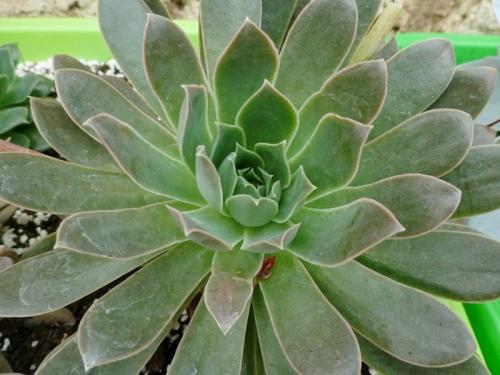
Photo Ed Dunin-Wasowicz
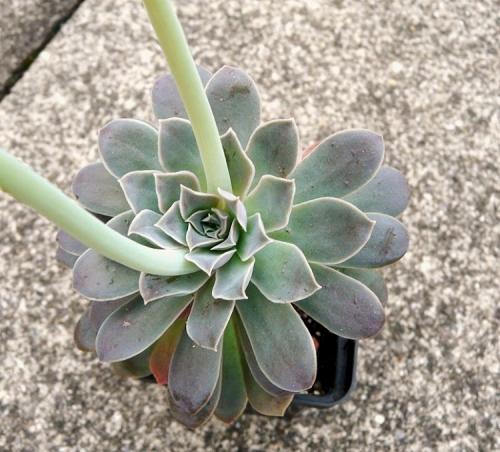
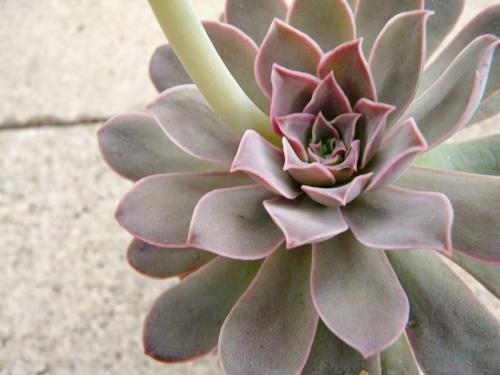
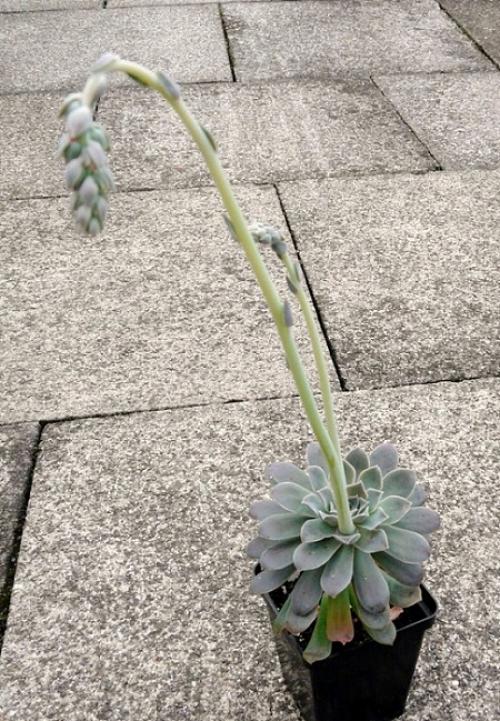
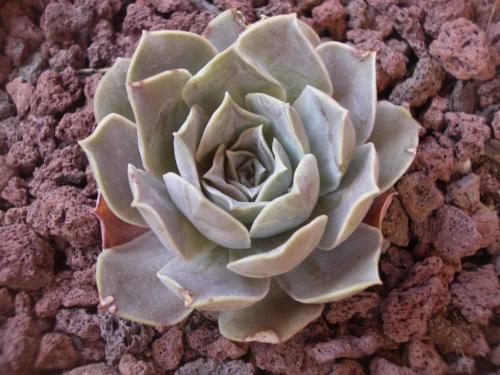
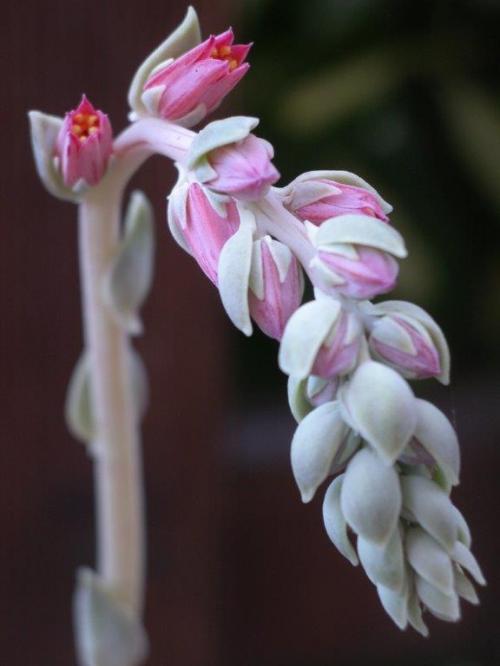
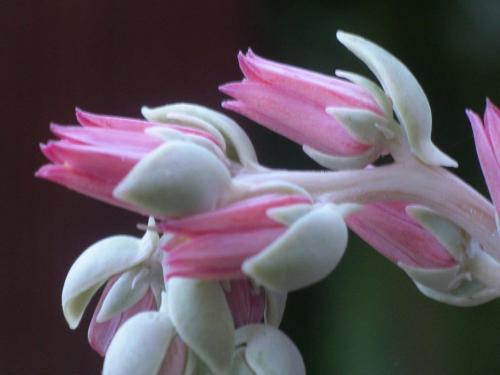
Photos Mateo Lichtenstein